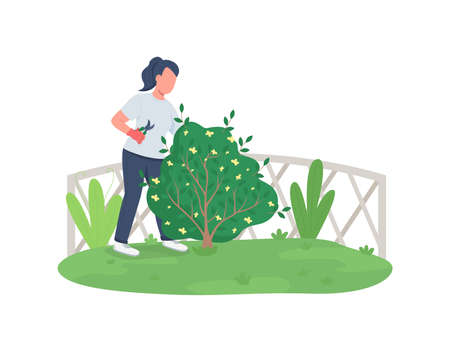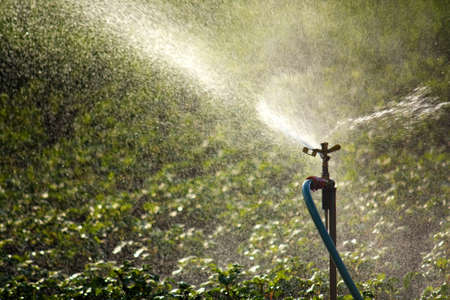Understanding India’s Weather Patterns
India is a land of remarkable climatic diversity, with weather conditions that vary dramatically across its vast landscape. From the lush, rain-soaked regions of Kerala and Assam, shaped by the annual monsoon, to the semi-arid and dry zones found in Rajasthan and parts of Maharashtra, each area presents unique challenges and opportunities for agriculture. Indian farmers must navigate not only the heavy rainfall during the monsoon season but also periods of drought and unpredictable temperature swings. This diversity means that tracking weather data is not just helpful—it is essential. By understanding local weather trends, farmers can make informed decisions about sowing, irrigation scheduling, and crop protection. Whether it’s anticipating the arrival of the southwest monsoon or preparing for an unexpected heatwave, access to reliable weather information empowers farmers to safeguard their crops, conserve water, and boost overall productivity. As climate change increases variability, integrating weather data into daily farm management becomes even more critical for sustainable agriculture in India.
2. Role of Irrigation in Indian Agriculture
Irrigation has always been the backbone of Indian agriculture, shaping cropping patterns and ensuring food security across diverse agro-climatic zones. From the lush paddy fields of Tamil Nadu to the expansive sugarcane farms of Uttar Pradesh, both traditional and modern irrigation systems play a crucial role in sustaining crop yields. In India, farmers rely on a blend of age-old techniques like tank irrigation and canal networks, as well as newer solutions such as drip and sprinkler systems that are increasingly adopted to conserve water and boost productivity.
Traditional vs. Modern Irrigation Methods
| Irrigation Method | Description | Common Crops | Regions/States |
|---|---|---|---|
| Canal Irrigation | Water diverted from rivers via canals to fields. | Paddy, wheat, sugarcane | Punjab, Haryana, UP |
| Tank Irrigation | Rainwater collected in tanks, used during dry periods. | Paddy, pulses | Tamil Nadu, Karnataka, Andhra Pradesh |
| Well/Borewell Irrigation | Groundwater drawn using wells or borewells. | Sugarcane, vegetables, pulses | Maharashtra, Gujarat, MP |
| Drip Irrigation | Water delivered directly to roots through pipes and emitters. | Vegetables, sugarcane, cotton | Maharashtra, Telangana, Andhra Pradesh |
| Sprinkler Irrigation | Water sprayed over crops simulating rainfall. | Pulses, oilseeds, vegetables | Karnataka, Rajasthan, Haryana |
Cultural Context: Crop Preferences & Practices
Certain crops dominate specific regions due to their water needs and local culinary preferences. For example, paddy is synonymous with South Indian cuisine and is extensively cultivated using tank and canal irrigation. Sugarcane thrives under well or drip irrigation in Maharashtra and UP—states known for jaggery production and festive sweets. Pulses like tur (arhar) and moong are staple proteins in Indian thalis and are often grown in semi-arid regions using innovative moisture-saving methods.
The Intersection with Weather Data Integration
The choice between traditional and modern irrigation is increasingly influenced by real-time weather data. By aligning irrigation schedules with monsoon predictions or dry spells forecasted by IMD (Indian Meteorological Department), farmers can optimise water usage for key crops—maximising yield while reducing input costs. This synergy between weather intelligence and irrigation practice is paving the way for more resilient and sustainable farming across Indian states.

3. Synergy between Weather Data & Irrigation Decisions
When we talk about Indian agriculture, the union of weather data and irrigation is not just a fancy concept—it’s a daily necessity for our farmers. With unpredictable monsoons and erratic weather patterns, the ability to adapt quickly can make all the difference in crop yield and water conservation. Imagine a farmer in Punjab checking real-time rainfall updates before deciding whether to run his tube well or wait for the next natural shower. By using mobile apps or SMS alerts from IMD (India Meteorological Department), many are now able to align their irrigation schedules with actual rainfall predictions. For example, wheat growers in Punjab often delay irrigation if there is a forecast for rain, saving both water and energy costs.
Similarly, in Tamil Nadu, where water scarcity is a constant challenge, paddy cultivators are leveraging local weather stations’ data to plan irrigation cycles. By monitoring humidity, temperature, and expected rainfall, they can fine-tune how much water to release from farm ponds or drip systems. This approach not only prevents over-irrigation but also reduces input costs and avoids water-logging issues that could harm root health. Some progressive farmers in Coimbatore district have even formed WhatsApp groups where local updates on weather and best irrigation times are shared—making it a true community-driven effort.
By blending traditional wisdom with modern technology, Indian farmers are setting examples of resourcefulness. The synergy between timely weather data and smart irrigation decisions helps them get better yields while conserving precious water—a win-win situation that every kisan aspires for.
4. Digital Tools and Local Innovations
In today’s Indian agriculture landscape, the integration of weather data with irrigation has opened the door for a new wave of digital tools and grassroots innovations. From mobile apps to homegrown agri-tech startups, these solutions are empowering farmers across villages to make smarter, data-driven decisions about water management.
Mobile Apps: Your Farm’s Weather Companion
Several easy-to-use mobile applications are now available in regional languages like Hindi, Tamil, Telugu, and Marathi, ensuring accessibility for farmers from all corners of India. These apps deliver hyperlocal weather forecasts, rainfall predictions, and irrigation schedules directly to a farmer’s phone—making it easier than ever to plan watering routines around changing climate patterns.
| App Name | Main Features | Languages Supported | Popular States |
|---|---|---|---|
| Kisan Suvidha | Weather updates, market prices, advisory services | Hindi, English, Regional Languages | Uttar Pradesh, Punjab |
| RML Farmer | Personalised weather alerts, crop advice | 10+ Indian Languages | Maharashtra, Gujarat |
| Krishi Gyan Sewa | Irrigation schedules based on rainfall data | Hindi, Marathi | Madhya Pradesh, Rajasthan |
Agri-Tech Startups: Bridging Data and Fields
India’s startup ecosystem has seen a surge in agri-tech companies focused on bridging the gap between high-tech weather analytics and rural irrigation practices. Startups such as Aquaconnect, Crofarm, and NinjaCart offer platforms where farmers can access satellite-based weather insights combined with expert irrigation advice. These startups often collaborate with local Krishi Vigyan Kendras (KVKs) to ensure their services align with grassroots needs.
Grassroots Solutions: Tradition Meets Technology
Local innovations have also emerged from within communities themselves. In Karnataka’s Mandya district, farmer groups have set up WhatsApp networks that share real-time weather updates and best practices for water-saving irrigation methods like drip and sprinkler systems. Similarly, self-help groups in Telangana have piloted solar-powered soil moisture sensors that alert farmers when fields need watering—saving both water and electricity.
Cultural Adaptation and Community Ownership
The beauty of these digital and local solutions lies in their adaptability. By combining traditional knowledge—like reading cloud movements or local wind patterns—with modern data tools, Indian farmers are creating uniquely desi models for sustainable agriculture. The trust built through community-led adoption ensures that technology is not just another top-down intervention but an everyday tool that fits seamlessly into the rural way of life.
5. Challenges in Reaching Smallholder Farmers
While integrating weather data with irrigation systems holds great promise for Indian agriculture, reaching the country’s vast network of smallholder farmers is not without its hurdles. India’s farming landscape is incredibly diverse, not only in terms of crops and climates but also languages, literacy levels, and access to technology.
Language Diversity and Communication Gaps
India is home to hundreds of spoken languages and dialects. Many digital tools and advisory platforms offer information primarily in English or Hindi, making it difficult for farmers from Tamil Nadu, West Bengal, or the North-East to understand and implement advice. Localisation of technology—translating apps and SMS alerts into regional languages—is crucial for effective outreach. Some start-ups and government schemes have begun piloting voice-based advisories in vernacular languages to bridge this gap.
Limited Internet Connectivity
Although smartphone penetration has increased, internet connectivity remains patchy in many rural areas. This digital divide means that real-time weather updates or irrigation recommendations often cannot reach the last mile. Solutions like offline-enabled apps, IVR (interactive voice response) calls, or even community radio broadcasts are being explored to ensure that critical information gets through during key sowing or harvesting periods.
Affordability and Accessibility
The cost factor is another significant barrier. Many small-scale farmers operate on tight margins and may find advanced weather stations or automated irrigation controllers out of reach financially. To tackle this, farmer co-operatives in states like Maharashtra and Punjab have pooled resources to purchase shared equipment, lowering individual costs. Additionally, NGOs and agri-tech startups are offering subsidised rates or pay-per-use models so that even marginal farmers can access these technologies.
Success Stories: Co-operative Efforts Making a Difference
One inspiring example comes from a farmer producer organisation in Karnataka. By forming a collective, they accessed government grants to install solar-powered weather stations and shared drip irrigation systems across several villages. This collective approach made technology affordable and fostered peer learning—farmers would regularly meet to discuss how to interpret weather data and adjust their watering schedules accordingly. In Punjab, WhatsApp groups moderated by local agri-extension officers help relay timely weather warnings in Punjabi, ensuring more farmers take action before heavy rains or heatwaves hit.
Towards More Inclusive Solutions
The journey towards widespread adoption of weather-informed irrigation practices requires continued innovation—not just technologically but also socially. By addressing barriers around language, connectivity, and affordability, and by championing community-driven initiatives, India can ensure that even its smallest farmers benefit from the power of climate-smart agriculture.
6. Future Prospects: Towards Climate-Resilient Agriculture
India’s agricultural sector stands at a pivotal point, as both climate challenges and technological advancements shape its future. The integration of weather data with irrigation practices is not just about present-day efficiency—it is about building resilience for the years ahead. As we look forward, several government schemes and grassroots strategies are paving the way for a more sustainable and climate-resilient Indian agriculture.
Government Initiatives Driving Change
The Pradhan Mantri Krishi Sinchayee Yojana (PMKSY) has been instrumental in promoting efficient water management across the country. By encouraging micro-irrigation techniques like drip and sprinkler systems, PMKSY directly supports farmers in adapting to erratic rainfall patterns and optimizing water usage based on real-time weather information. Another significant move is the Kisan Credit Card (KCC) scheme, which empowers farmers financially, enabling them to invest in modern technologies—such as automated weather stations or IoT-based irrigation controllers—that help sync field practices with weather forecasts.
Smart Subsidies and Digital Push
With the Digital India mission, many states now provide subsidies for installing weather-based irrigation equipment. These initiatives are complemented by mobile apps and helplines that deliver hyperlocal weather alerts in regional languages, ensuring that even smallholder farmers can access critical information when it matters most.
Community-Driven Strategies
Beyond government programs, local communities are coming together to build collective resilience. Farmer Producer Organisations (FPOs) in Maharashtra and Karnataka, for instance, have started sharing pooled resources such as soil moisture sensors and common weather stations. Peer-to-peer learning sessions—often held at village chaupals—enable knowledge exchange on best practices for combining weather data with daily irrigation decisions.
Innovative Partnerships
Non-profits and agri-tech startups are also playing a big role. Collaborations between NGOs like Digital Green and state agricultural universities help create context-specific training modules, from interpreting satellite rainfall maps to setting up low-cost rain gauges. Many WhatsApp groups now serve as informal extension networks where farmers share their own experiences of adjusting irrigation schedules after receiving rainfall warnings or heatwave advisories.
Towards a Sustainable Tomorrow
The road to climate-resilient agriculture in India is long but promising. The synergy between policy support, technology adoption, and community participation is making it possible for Indian farmers—from Punjab’s wheat belts to Tamil Nadu’s rice paddies—to withstand climate shocks with greater confidence. Continued investments in education, access to credit, and digital infrastructure will ensure that the benefits of integrating weather data with irrigation reach every corner of rural Bharat.


